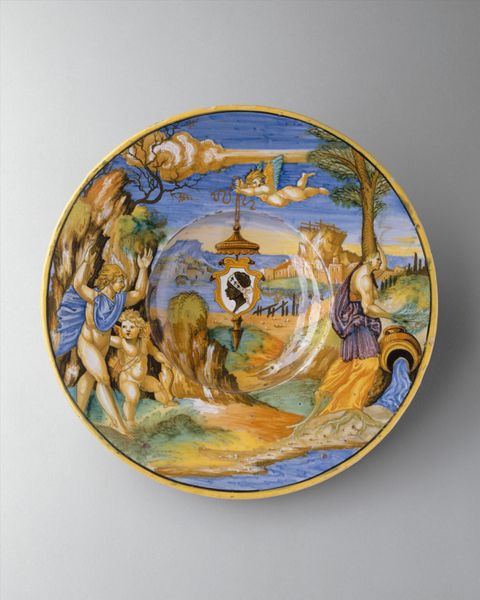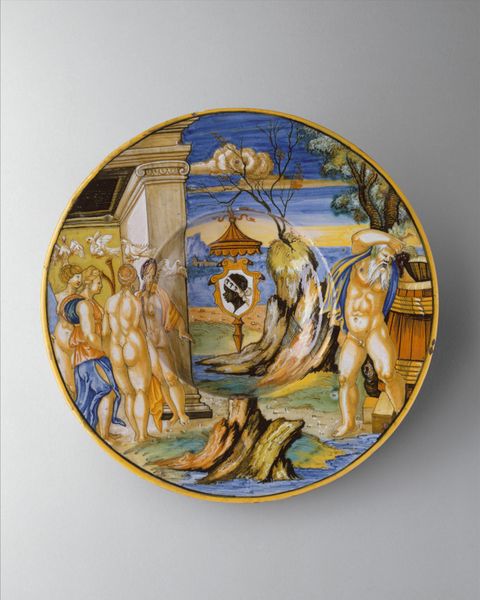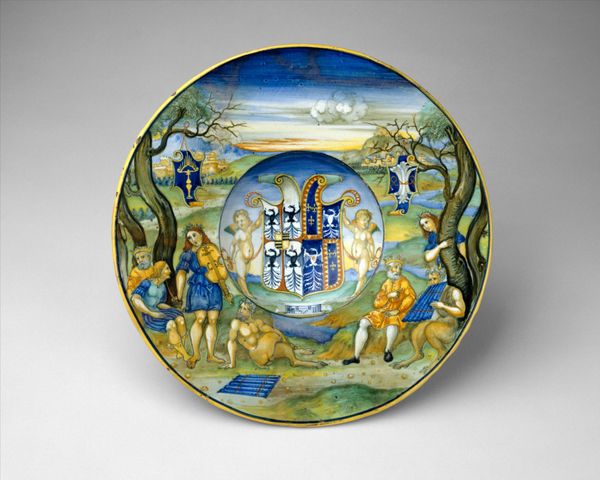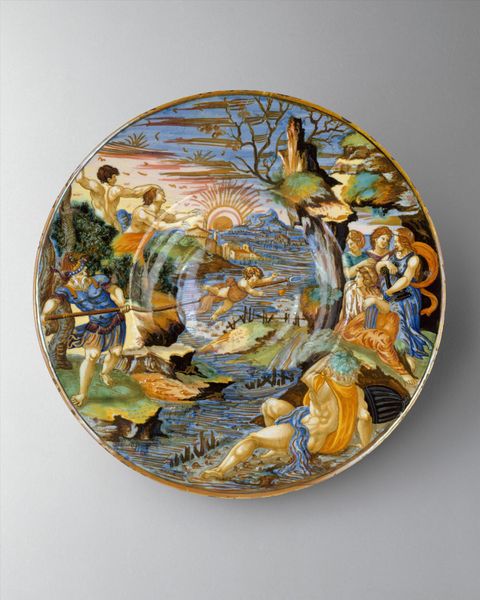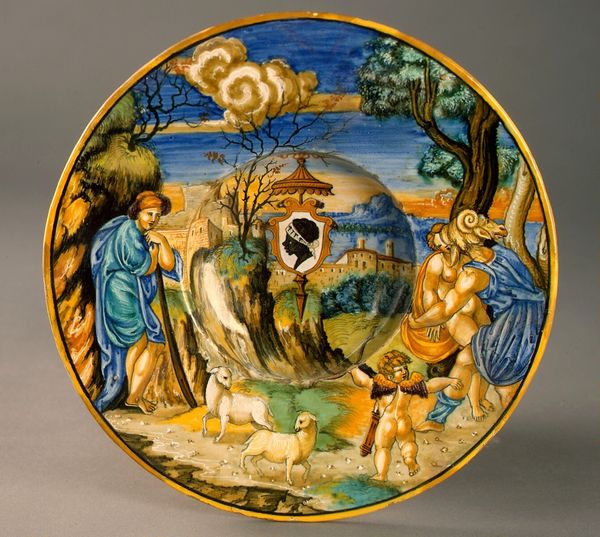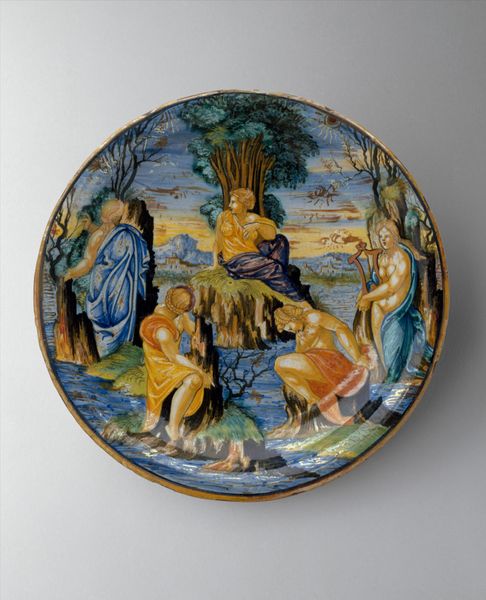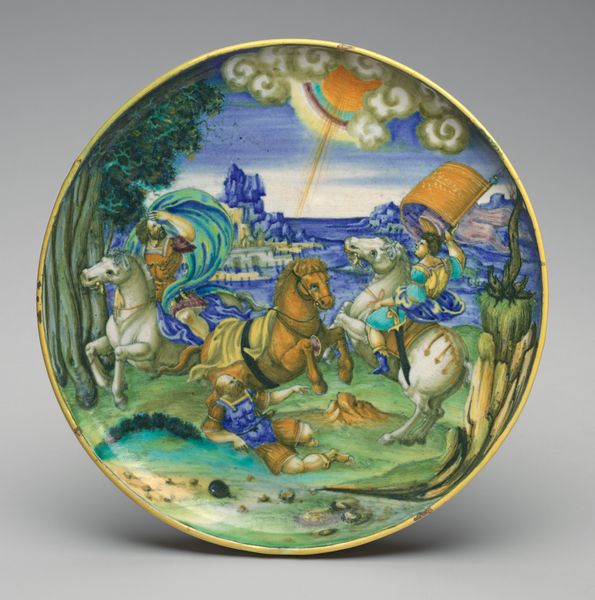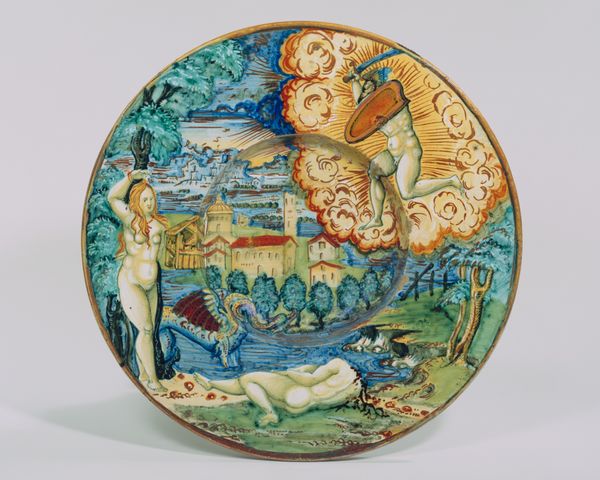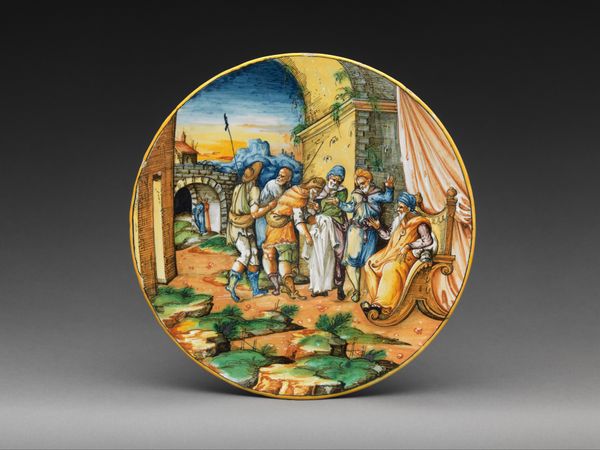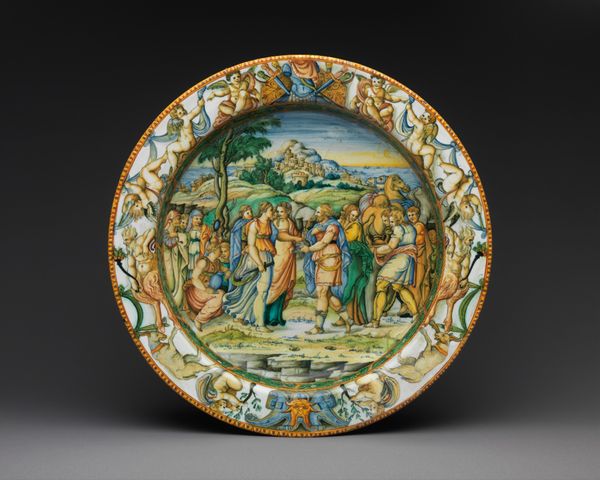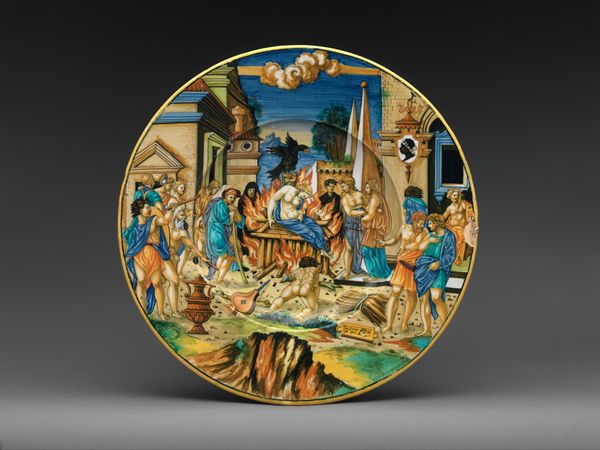
ceramic, fresco
#
landscape
#
ceramic
#
bird
#
strong focal point
#
figuration
#
fresco
#
men
#
history-painting
#
italian-renaissance
Dimensions: Diam. 10 3/16 in. (25.8 cm)
Copyright: Public Domain
Curator: This exquisite plate, or "tondino," as it was known then, was crafted around 1530 by Francesco Xanto Avelli da Rovigo. We are lucky enough to have it here at the Metropolitan Museum of Art. Editor: The colors are striking! Such vibrant blues and yellows—it gives off a summery, almost idyllic feeling, even with the... figures seeming rather tense. Curator: Indeed. Xanto Avelli was a master of maiolica, a tin-glazed earthenware. The intense colors come from metallic oxides painted onto the glaze before firing. Consider the specific labour of creating a functional ceramic object with such detailed narrative imagery and the expense of this as a symbol of status. Editor: Speaking of narrative, it’s the arrangement of the figures that intrigues me most. A lone archer to the left, gazing intensely, and then that pair cloaked together, almost conspiratorial, on the right. What tale is unfolding here, do you think? And that coat of arms floating there! Curator: It’s certainly intended to convey a complex narrative, likely referencing classical mythology or literature which would have been instantly recognisable to contemporary viewers. I see it as an indication of learnedness to correctly place the images' symbolic relation. It also tells us something about patronage, or a private commission - indicating for whom it would be intended. Editor: I agree. And I'm drawn to those birds flying overhead—a visual motif promising something to come. The inclusion of heraldry and those subtle clues make me imagine elaborate dining rituals or special celebrations it was a centerpiece for. Curator: It speaks to the blurring of boundaries between art, craft and utility in Renaissance workshops, it reminds us to see beyond formal categories, and value this not just for its aesthetic qualities, but for the evidence it presents us of Italian manufacturing, economic investment, and class identity. Editor: Absolutely, and when we approach it as an iconographical puzzle as well as a crafted luxury object, it really makes the plate spring to life. Curator: Examining the materials and making processes really opens up what was possible. Editor: And that’s where unlocking symbolism truly begins—I’m so grateful for a new perspective on this beautiful plate!
Comments
No comments
Be the first to comment and join the conversation on the ultimate creative platform.
